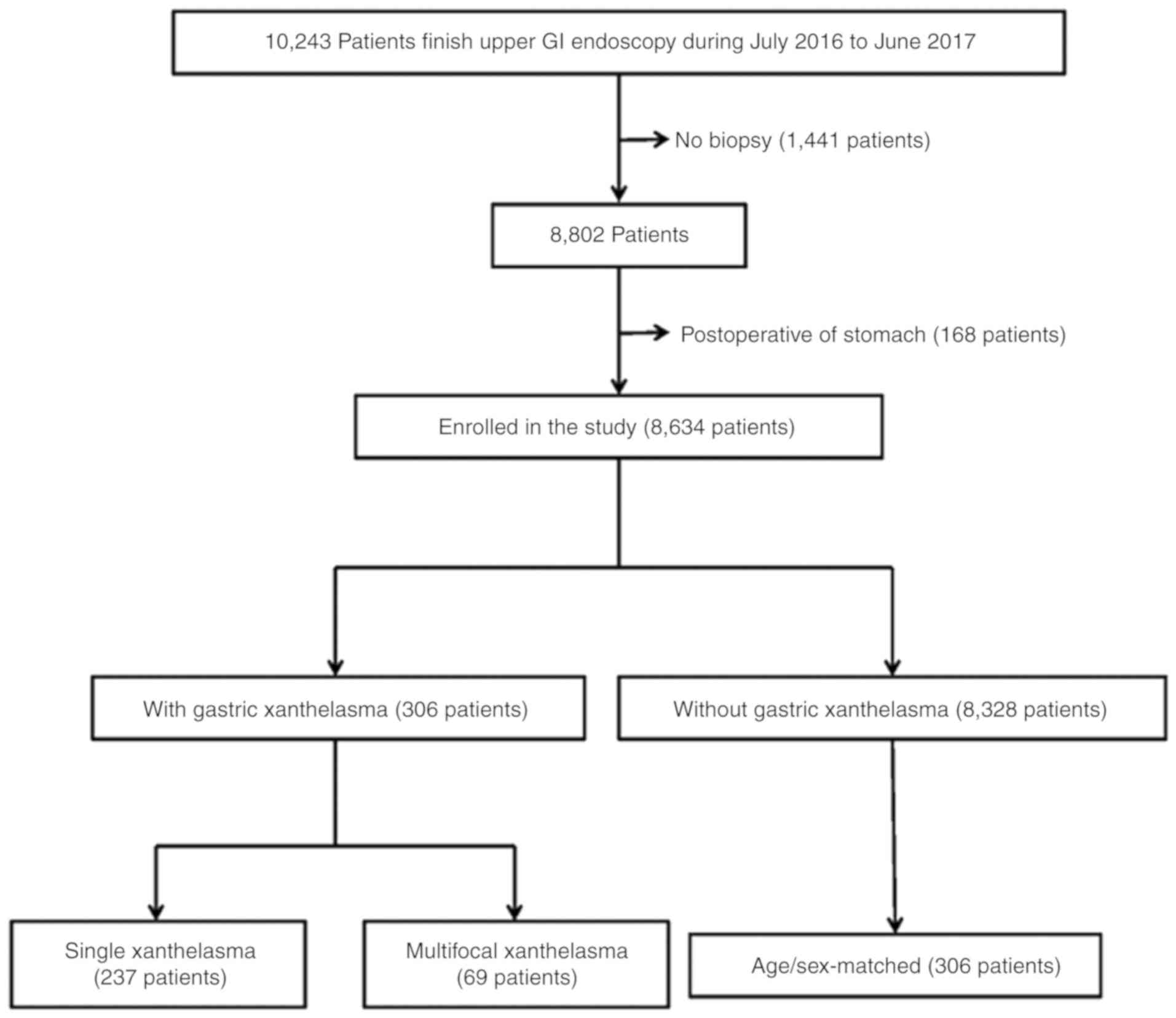Gastric xanthelasma may be a warning sign of intestinal metaplasia: A cross‑sectional study
- Authors:
- Published online on: June 19, 2020 https://doi.org/10.3892/or.2020.7651
- Pages: 1275-1281
Metrics:
Total
Views: 0 (Spandidos Publications: | PMC Statistics:
)
Total PDF Downloads: 0 (Spandidos Publications: | PMC Statistics:
)
Abstract
Certain conflicting conclusions have been drawn that gastric xanthelasma is related to H. pylori, atrophic gastritis, intestinal metaplasia, and early gastric cancer. The aim of this study was to examine the relationship between gastric xanthelasma and upper gastrointestinal (GI) endoscopic or pathological features. A cross‑sectional study was completed. A total of 8,634 patients who underwent stomach biopsy and who had no gastrectomy history were enrolled in the study. The patients were divided into two groups according to the presence or absence of gastric xanthelasma. The relationship between gastric xanthelasma and demographic characteristics (including age and sex), endoscopic features (including peptic ulcer, bile reflux, and gastric poly), or pathological features (including atrophy, intestinal metaplasia, H. pylori, dysplasia, and gastric cancer) was analyzed. Age/sex matched analysis was also performed to exclude the influence of age and sex. The results revealed that out of the 8,634 patients, 3.54% patients had xanthelasma. Gastric xanthelasma was significantly associated with age (55.76 vs. 49.17 years, P<0.0001), duodenal ulcer (OR 0.860, 95% CI 0.369‑0.923), atrophy (OR 1.839, 95% CI 1.432‑2.362), and intestinal metaplasia (OR 3.296, 95% CI 2.612‑4.159). Binary logistic analysis revealed that age (OR 1.027, 95% CI 1.017‑1.037) and intestinal metaplasia (OR 2.700, 95% CI 2.090‑3.487) were independently related to gastric xanthelasma. Age/sex matched control binary logistic analysis revealed that gastric xanthelasma was significantly associated with presence of intestinal metaplasia (OR 2.338, 95% CI 1.659‑3.297). There was no difference in the number (P=0.427) and location (P>0.05) of gastric xanthelasma for intestinal metaplasia. In conclusion, gastric xanthelasma may be an independent endoscopic warning sign of intestinal metaplasia.











